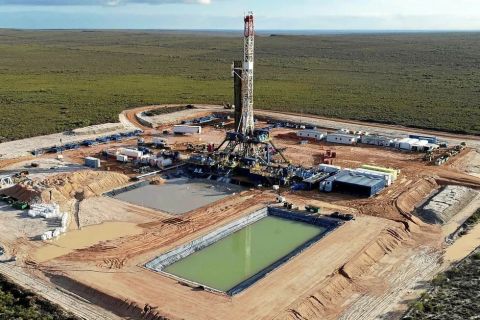Officials from Saudi Aramco and the Saudi petroleum ministry have frequently reaffirmed at numerous oil industry conferences and meetings that their leading role in supplying the world with crude oil and refined products is undiminished. But beyond the public-relations campaign, the kingdom is taking real action. During the next five years, it is planning to develop additional production from five large oil fields, to increase its sustained productive capacity to12 million barrels per day by 2009-some 3 million barrels more than it is producing today. This represents the largest spending increase to expand production in 25 years, according to Saudi Aramco's 2005 annual report. "In less than five years, [this] will add the rough equivalent of the annual crude oil production of Norway or Venezuela," the company reports. In 2005, the kingdom produced 3.3 billion barrels of oil, or an average 9.1 million barrels per day. It exported some 2.6 billion barrels last year, with 49.7% going to the Far East. It also produced 2.8 trillion cubic feet of natural gas or 7.8 billion cubic feet per day. In the past year, the Saudi rig count has increased to about 100 from the mid-50s and it is expected to rise to 121 by year-end 2006. In 2005, it completed 212 oil and 20 gas wells. Houston-based GlobalSantaFe Corp. recently announced a new contract to provide Saudi Aramco four jackup rigs, each for a four-year term. Drilling will begin in first-quarter 2007. "The true magnitude of Saudi Aramco's endeavors during the past year will become apparent only in time, given the many mega-projects currently under way throughout the company," says Ali I. Al-Naimi, Saudi oil minister. A.G. Edwards & Sons oil analyst Bruce Lanni says, "We estimate approximately 40- to 50 million barrels per day of new [world] production will be required to 2010 to offset natural field decline rates and normalized [world] demand growth. Currently we estimate base production is declining 4.5% annually or 3.6 million barrels per day...." G. Allen Brooks, managing director of Parks Paton Hoepfl & Brown, an oil-service investment bank in Houston, says, "Today's surge in Saudi Arabian drilling activity reflects the more challenging drilling conditions that must be overcome in order to increase the country's production capacity. One could project that the kingdom may surpass the Gulf of Mexico in terms of active drilling rigs by early 2007." He adds that more wells will need to be drilled horizontally or in remoter regions of the kingdom that require infrastructure, in order to meet Saudi Aramco's ambitious production goals. In addition to increased drilling, Saudi Aramco is expanding what is already the world's largest gas-gathering and -processing plant in the kingdom, and is tripling the size of a crude oil refining and ethylene plant in Fujian province, China, among several other large projects. It is committed to supplying to China's Sinopec and its affiliates some 1 million barrels per day of oil by 2010.
Recommended Reading
Ithaca Energy to Buy Eni's UK Assets in $938MM North Sea Deal
2024-04-23 - Eni, one of Italy's biggest energy companies, will transfer its U.K. business in exchange for 38.5% of Ithaca's share capital, while the existing Ithaca Energy shareholders will own the remaining 61.5% of the combined group.
Triangle Energy, JV Set to Drill in North Perth Basin
2024-04-18 - The Booth-1 prospect is planned to be the first well in the joint venture’s —Triangle Energy, Strike Energy and New Zealand Oil and Gas — upcoming drilling campaign.
EIG’s MidOcean Closes Purchase of 20% Stake in Peru LNG
2024-04-23 - MidOcean Energy’s deal for SK Earthon’s Peru LNG follows a March deal to purchase Tokyo Gas’ LNG interests in Australia.
Equinor Acquires Stake in Standard Lithium Smackover Projects
2024-05-08 - Equinor’s transaction, completed effective May 7, includes interests in Standard Lithium’s flagship South West Arkansas Project and East Texas properties.
Crescent Point Divests Non-core Saskatchewan Assets to Saturn Oil & Gas
2024-05-07 - Crescent Point Energy is divesting non-core assets to boost its portfolio for long-term sustainability and repay debt.




